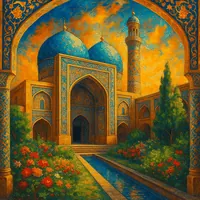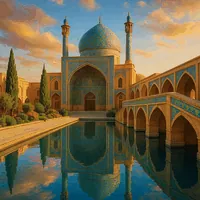Zābol, nestled in the arid landscapes of southeastern Iran, stands apart through its remarkable Sistan wind, known locally as the "120-Day Wind." This formidable, dust-laden gale sweeps through the city with a relentless vigor from late spring to early autumn, shaping not just the climate but also the daily life and architecture, as windcatchers—traditional Persian ventilators—become a quintessential feature. Moreover, Zābol's proximity to the historical site of Shahr-e Sukhteh, the Burnt City, offers a unique glimpse into a 5,000-year-old civilization, underscoring its distinct cultural tapestry.
Notable points about Zābol
- Unique Geographic Location: Zābol is situated near the border with Afghanistan, in close proximity to the Hāmūn-e Helmand seasonal lake, which is a significant ecological zone. The city's location in the Sistan and Baluchestan Province provides it with a unique climate, characterized by hot summers and mild winters, unlike much of the rest of Iran.
- Cultural Heritage: Known for its rich cultural history, Zābol is home to many archeological sites and ancient ruins, including those from the Sistan civilization. The nearby sites of Shahr-e Sukhteh ("Burnt City") offer valuable insights into ancient urban planning and life.
- Wind of 120 Days: Zābol experiences a natural phenomenon called the "Wind of 120 Days," a strong seasonal wind that blows across the region in summer. This wind is unique to the area and plays a crucial role in the culture and lifestyle of its inhabitants, influencing everything from architecture to agriculture.
- Economic Center: Historically, Zābol has been an important trade hub due to its strategic position on trade routes that connect Iran with Afghanistan and Pakistan. Its bazaars have a variety of goods, providing an interesting experience for visitors interested in regional crafts and products.
- Attraction for Archaeology Enthusiasts: The nearby Shahr-e Sukhteh, a UNESCO World Heritage Site, is a treasure trove for archaeology enthusiasts. The site offers a glimpse into ancient technologies and customs, captivating those interested in history and archaeology.
- Ecotourism Potential: The Hāmūn-e Helmand lakes and surrounding wetlands are a paradise for birdwatchers and nature lovers, featuring a diverse range of bird species, especially during migration seasons.
- Traditional Chador Weaving: The city is renowned for its traditional chador weaving, with unique patterns and textures that are significant to the region's identity. This makes it a fascinating destination for fashion enthusiasts and those interested in traditional textiles.
- Family-friendly Environment: Zābol offers a quieter lifestyle ideal for families, with its calm environment, and open spaces. The city's relatively small size and close-knit community can be appealing for parents looking to raise children in a safe, community-oriented setting.
- Scientific and Educational Opportunities: Zābol University provides educational opportunities and has faculties dedicated to various fields, making it a regional center for higher education. This attracts students and academics, offering a vibrant, intellectually stimulating environment.
- Cultural Diversity: Unlike many other cities in Iran, Zābol is characterized by its cultural diversity, with significant communities of ethnic Baluchis and Pashtuns, offering a unique blend of cultural experiences, cuisine, and traditions distinct from other Iranian cities.


